The Castello del Buonconsiglio in Trento will be the site, from July 3 to October 25, 2021, of the first exhibition dedicated to a great painter of the Cinqe-Seventeenth century, Fede Galizia (documented in Milan from 1587 - Milan, after 1630), an artist of Trentino origin whose biographical path can be placed alongside that of other great women of the time such as Sofonisba Anguissola and Artemisia Gentileschi. Fede lived mainly in Milan: the move from Trent to the Lombard city of the Galizia family, of Cremonese origins, must have taken place in the wake of her multifaceted father, Nunzio Galizia, an artist himself, engaged in the fields of miniatures, costumes, and accessories, as well as cartography. Fede (a programmatic name for Counter-Reformation Europe) achieved great success among patrons of the time, so much so that works of his reached, before 1593, the imperial court of Rudolph II of Habsburg through the mediation of Giuseppe Arcimboldi.
Twentieth-century studies, especially Italian but not only, have given special emphasis to Faith’s activity as a still life painter, the origins of this fortunate genre. The exhibition, curated by Giovanni Agosti and Jacopo Stoppa, and entitled Fede Galizia. Mirabile pittoressa, intends to retrace the entire career of Fede Galizia in order to rethink in its entirety the profile of the artist, who made mainly portraits but also altarpieces, destined for venues that were anything but local (Montecarlo and Naples, for example). To date, there is no complete repertory of the numerous literary testimonies celebrating, in verse and prose, the talents of Fede Galizia, to be interwoven with a complete documentary regesto, which will be prepared for the occasion. The exhibition thus aspires to answer, through the presentation of the artist’s works and appropriate comparisons, several questions: why was Fede Galizia so popular? What are the reasons for his success in the era in which he lived? How much did her being a woman weigh in this? How does the appreciation of a work of art change between the long twilight of the Renaissance and today’s world?
The exhibition displays about eighty works including paintings, drawings, engravings, medals and ancient books. In addition to works by female painters of the period, such as Plautilla Nelli, Sofonisba Anguissola, Lavinia Fontana and Barbara Longhi, there will be works by Giuseppe Arcimboldi, Bartholomeus Spranger, Giovanni Ambrogio Figino, Jan Brueghel and Daniele Crespi, from Italy’s most important museums, such as the Pinacoteca di Brera and Castello Sforzesco in Milan, the Uffizi in Florence, the Accademia Carrara in Bergamo, Palazzo Rosso in Genoa, the Fondazione Cini in Venice, and the Galleria Borghese in Rome, as well as some international loans: from the Muzeum Narodowe in Warsaw, the Ringling Museum of Art in Sarasota, the Palacio Real de la Granja in San Ildefonso, as well as from a number of private collectors.
“In the sequence of major exhibitions at the Castello del Buonconsiglio dedicated to Trentino artists who found fame elsewhere (such as Alessandro Vittoria), but also to artists who also found great decorative episodes here in Trentino (e.g., Dosso Dossi and Battista Dossi, Romanino, Marcello Fogolino),” says Laura Dal Prà, director of the Castello del Buonconsiglio, “a tribute and homage to a figure who has always been considered a Trentino artist was missing, as she was the daughter of a Trentino artist, Nunzio, and rooted in Lombardy. Fede Galizia is an exemplary figure in terms of the Trentino culture of the Old Episcopal Principality as well. She is not an inspirational muse of great men, but she is a protagonist and creator of her own existence and artistic choices, who rightly ranks among the great female painters of the sixteenth and seventeenth centuries to whom an exhibition on the ladies of art right now is also dedicated in Milan. So she is an important figure, whose biography is complex, and on whom the curators have worked very well to restore with precisions and great novelties a profile and depth of this artist and her father.”
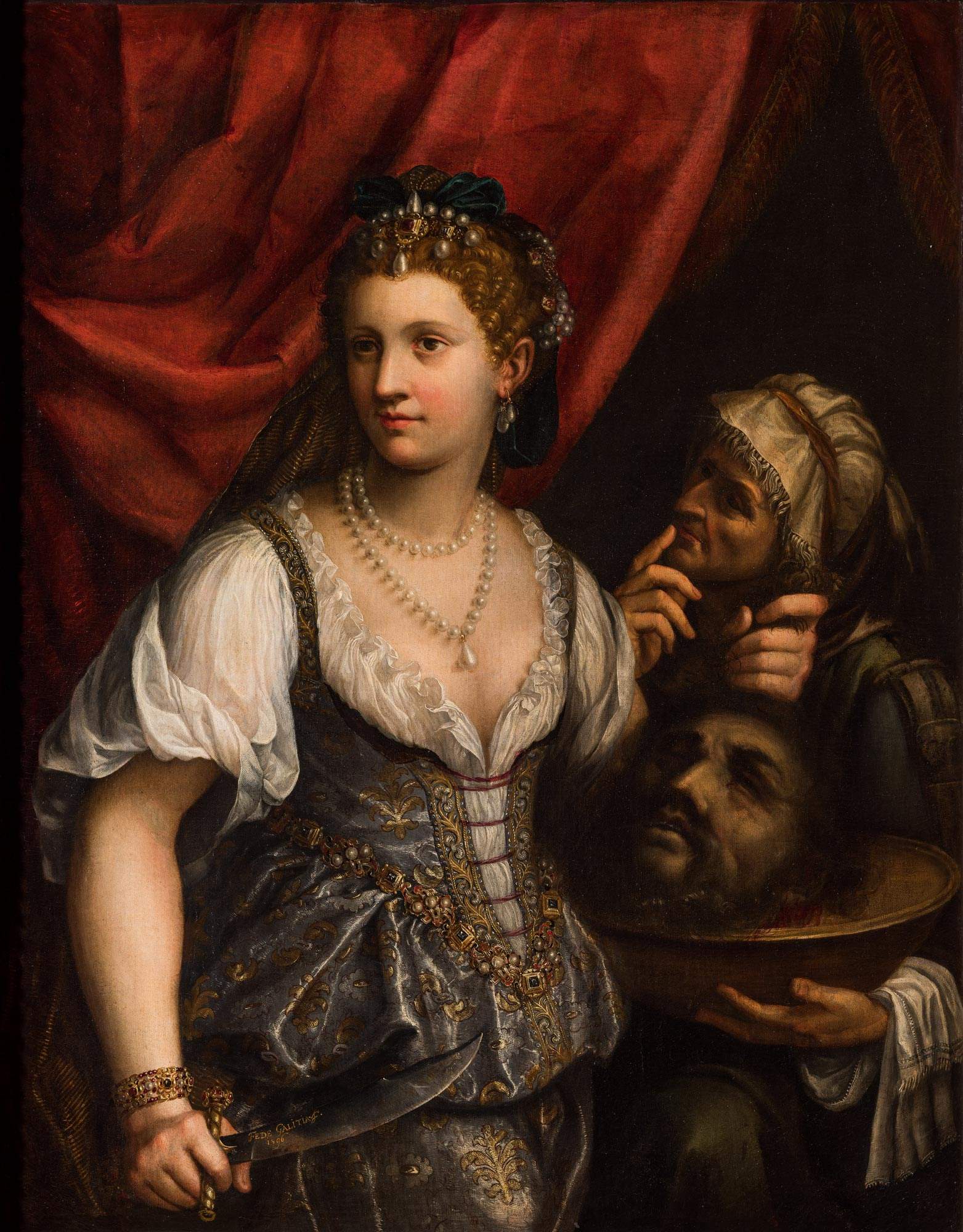 |
| Faith Galicia, Judith with the Head of Holofernes and the Servant Abra (Sarasota, Ringling Museum of Art) |
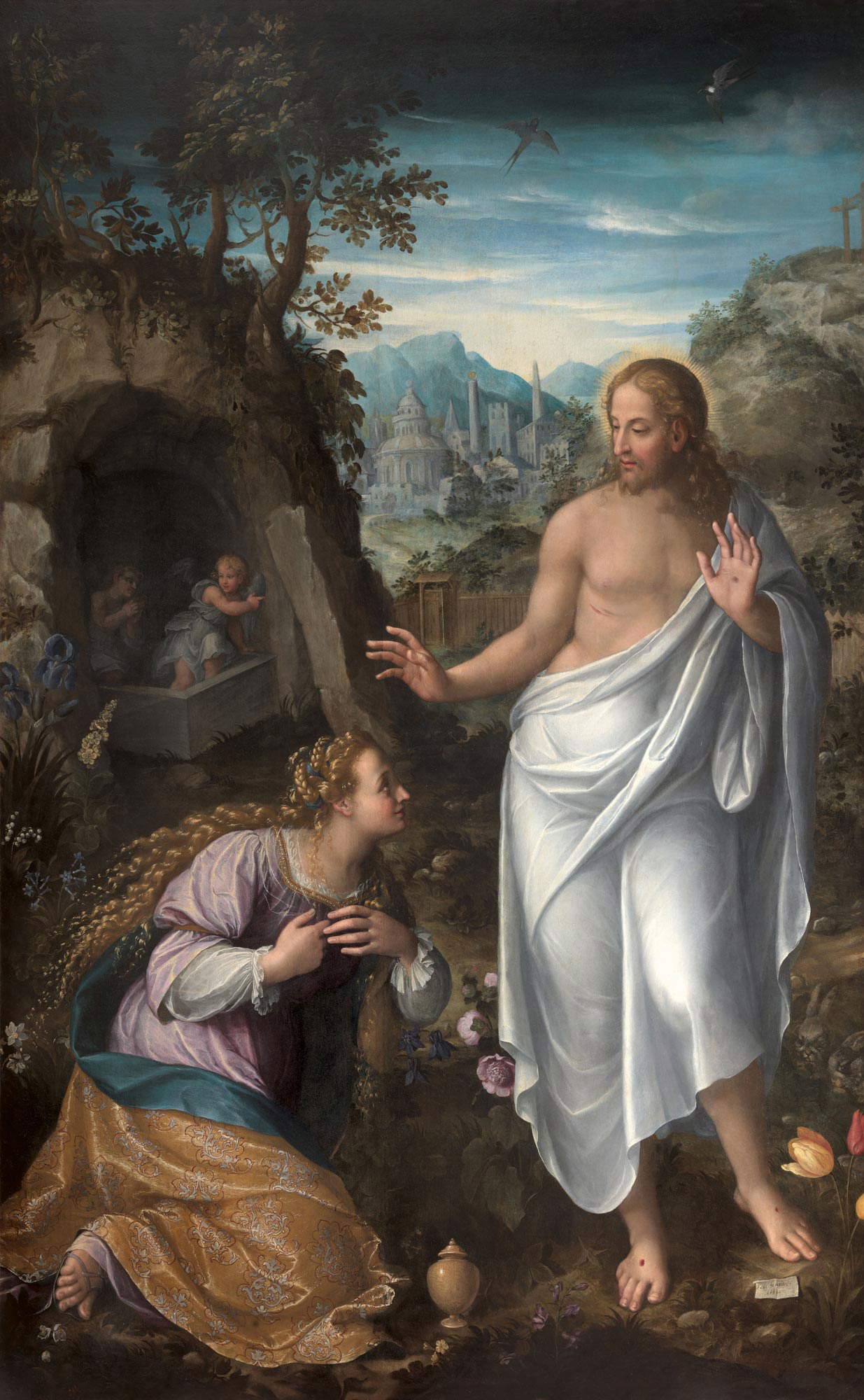 |
| Faith Galicia, Noli me tangere (Milan, Pinacoteca di Brera) |
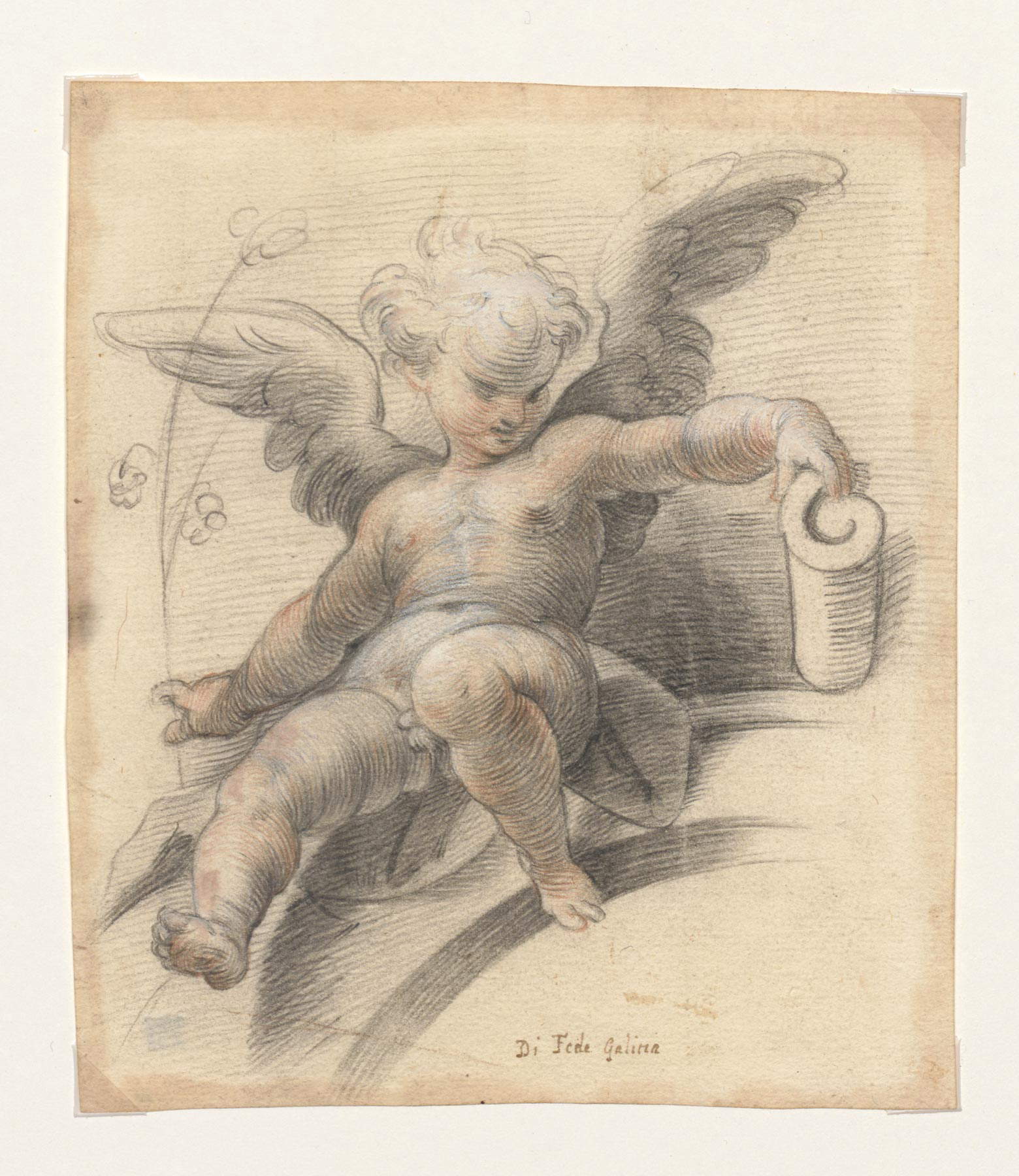 |
| Fede Galizia, Seated Cherub (Milan, Veneranda Biblioteca Ambrosiana) |
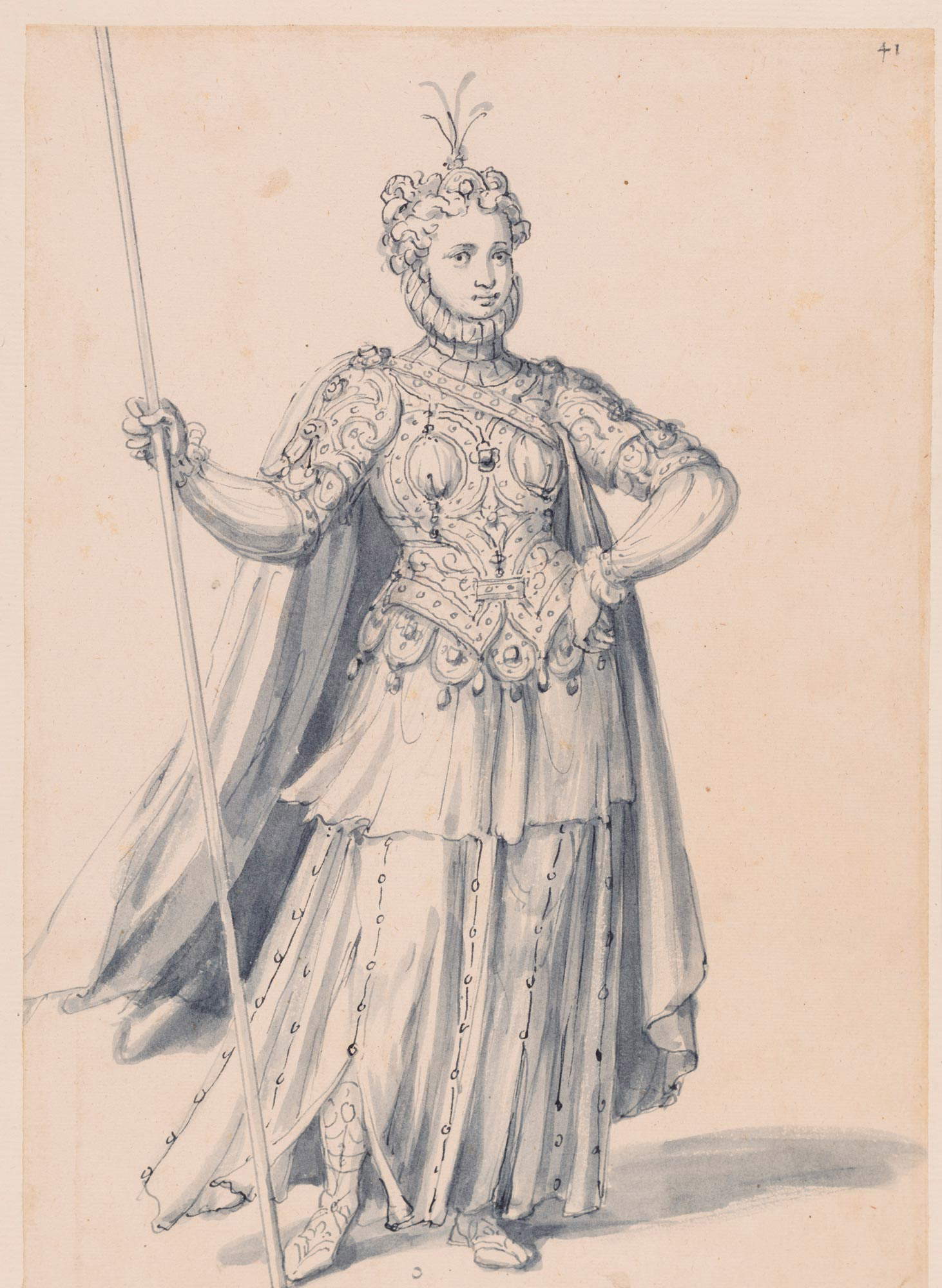 |
| Giuseppe Arcimboldo, Costume for Masquerade (Florence, Gabinetto Disegni e Stampe degli Uffizi) |
There are nine sections into which the exhibition is divided. The first is titled Quando anche le donne si misero a dipingere: introduced by the words of the great art historian Anna Banti, this section deals with the emergence, between amateurism and profession, of women painters in the age of the Counter-Reformation (ranging from those who began painting as a complement to a humanistic education to those who were daughters of art, passing through the nuns who painted out of devotion: works by the Anguissola sisters, Lavinia Fontana, Barbara Longhi and Sister Plautilla Nelli are on display). The cases addressed constitute a prologue to Fede Galizia’s experience. “To narrate the singularity of the character’s craft during the sixteenth century and the first decades of the seventeenth century,” says Jacopo Stoppa, “we start with a section with which we tried to bring in some works by famous women artists to see how this peculiarity, that is, the fact that there were women painters in the sixteenth century, contemplated such a wide range of possibilities: there were those who, like Sofonisba Anguissola, were artists completing a humanistic education, and there were instead daughters of art like Lavinia Fontana and Barbara Longhi, who instead sought a path more related to commissions even outside their own city: this is to give a bit of a mirror of what the profession of a painter is at that time, that is, in the last decades of the sixteenth century, when Faith begins to enter this profession, which for her will become a real profession.”
We then move on to the second section, Trent: the Council of Trent (1545-1563), in particular, is an unprecedented and unparalleled opportunity followed to make the episcopal principality of Trent known in theEurope of the time. On display in this section are works reproducing sessions of the Council that contribute to the fruitful and international cultural environment of Trent from which Nuncio and Faith Galicia came. Attesting to the latter’s ties with the city of her family’s origin is a depiction of her of the “blessed” Simonino da Trento, which testifies to the fact that Fede had continued to maintain relations with her city. The third section, Milan, enters the city where Fede took his first steps and traces the history of Nunzio Galizia, who was registered here as early as 1573 (Fede, on the other hand, has been since 1587 and is celebrated precisely in Milan for his activity as a painter). The exhibition aims to give an account of the shape of the city, through the view of Milan made by Nunzio in 1578 (one of the first views of the city, and the first with a bird’s eye view), at the end of the so-called “plague of St. Charles” that had seen the limitless deployment of Archbishop Carlo Borromeo. The Trentino artist’s versatility saw him variously engaged in the world of fashion and entertainment, in a context in which there was no shortage of contacts with the imperial court. Meanwhile, the main sponsor of the talents of the very young Faith is the Milanese Giuseppe Arcimboldi.
Continuing, the fourth section, Miniatures and Portraits, traces the history of the genre in which Nunzio Galizia excelled, that is, the miniature, which does not exhaust its history with the appearance of printing during the 15th century and in the 16th century, however, sees a sumptuous twilight. Nunzio Galizia is therefore first and foremost observed with the locchio dell’epoca: he is a miniaturist whose activity takes place particularly in Milan, but also in Turin, for the Savoy court. The exhibition therefore displays some examples of sixteenth-century Lombard miniature, ranging from illuminated codices to portraits. Prominent in the section are two portraits, executed by Fede Galizia, set in a rich frame elaborated by his father, which finds comparisons in some frontispieces of printed editions, in which famous artists, from Fiammenghino to Cerano, are involved. The fifth section, Judiths, revolves around the Judith from the Sarasota Museum in Florida, signed and dated 1596: this is a subject that Fede Galizia tackles several times, in some cases even re-proposing the same image (this is the case with the painting, dated 1601, in the Borghese Gallery). The collection of several specimens makes it possible to verify the degrees of autography, within a production, which does not reject (and this is also the case with the still lifes) seriality. In these Judiths, which abound in Fede’s production and are a peculiarity of his, the artist’s taste for the representation of costumes and jewelry emerges, which should also be understood in light of his father Nunzio’s expertise in clothing. Moving on, one encounters section number six, A scuola dal Correggio e dal Parmigianino (At School from Correggio and Parmigianino): the painting of Correggio, who died in 1534, is a priority reference for Fede, who studies his works (later specializing in the peculiarity of copying the works of the Parma artist), starting with those present in the Milanese context (in particular lOrazionenellOrto, now at Apsley House, in London, but which between the sixteenth and seventeenth centuries is in Milan in the rich collections of Marquis Pirro Visconti Borromeo). Fede, however, does not limit himself to reproducing lOrazionenellOrto: he also copies the Zingarella (now in Capodimonte) and the Madonna of the Basket (now in the National Gallery, London), envying in these images by Correggio a devout and sentimental stamp. Parmigianino is also central to his interests, as evidenced by the Saint Catherine that comes from the collection of the Borromeo princes.
The final sections delve further into the art of Fede Galizia. The seventh, titled A Famous Portraitist, focuses on the characters that, from a very young age, Fede Galizia immortalized and that made her appreciated as a portrait painter throughout Europe. The portrait of Paolo Morigia of the Pinacoteca Ambrosiana, a Jesuit and author (among others) of a book on the nobility of Milan, is displayed in the Duomo shortly after it was executed between 1592 and 1595. Fede Galizia also specialized in portraiture, executing portraits of important public figures: thus parading in this ideal gallery are Ludovico Settala, the doctor of the Manzonian plague; Federico Zuccari, the painter of the Idea; and Ippolita Trivulzio, princess of Monaco. The section On the Altars features the Noli me tangere, now at the Pinacoteca di Brera, which among the remaining paintings of Fede Galizia’s sacred production was the most admired by travelers of the past, but, curiously enough, is also perhaps the one furthest removed from modern taste. The minuteness with which the flowers in the very foreground are described, harking back to the contemporary production of still lifes, the calibrated gestures and the executive preciousness of the robes, seen through the telescope of the time, must restore Fede’s fame in Milan at the turn of the 16th and 17th centuries. Fame that must have led her to also produce a painting, with St. Charles, destined for Naples, and to take part in the decoration of thatantology of Lombard (and other) painting of the seventeenth century that is the Milanese church of SantAntonio abate, a church to which the artist will leave part of his property upon his death. The difference that separates Fede Galizia from other artists of the time lies precisely in the fact that the Trentino-born painter also engaged in commissions for altars or churches in general. Finally we come to the last section, How to Capture Silent Life: Fede Galizia tries her hand at a new genre, perhaps introduced in Milan, around the middle of the last decade of the sixteenth century, by a painter in the tradition of Leonardo, namely Giovanni Ambrogio Figino. But it will be Caravaggio ’s Canestra that belonged to Cardinal Federico Borromeo (it must have been from 1607) that will be a game changer, and Faith will try to measure herself, between themes and variations, with the new course of painting, inventing different compositions. But she will not be the only one to paint fruits and flowers.
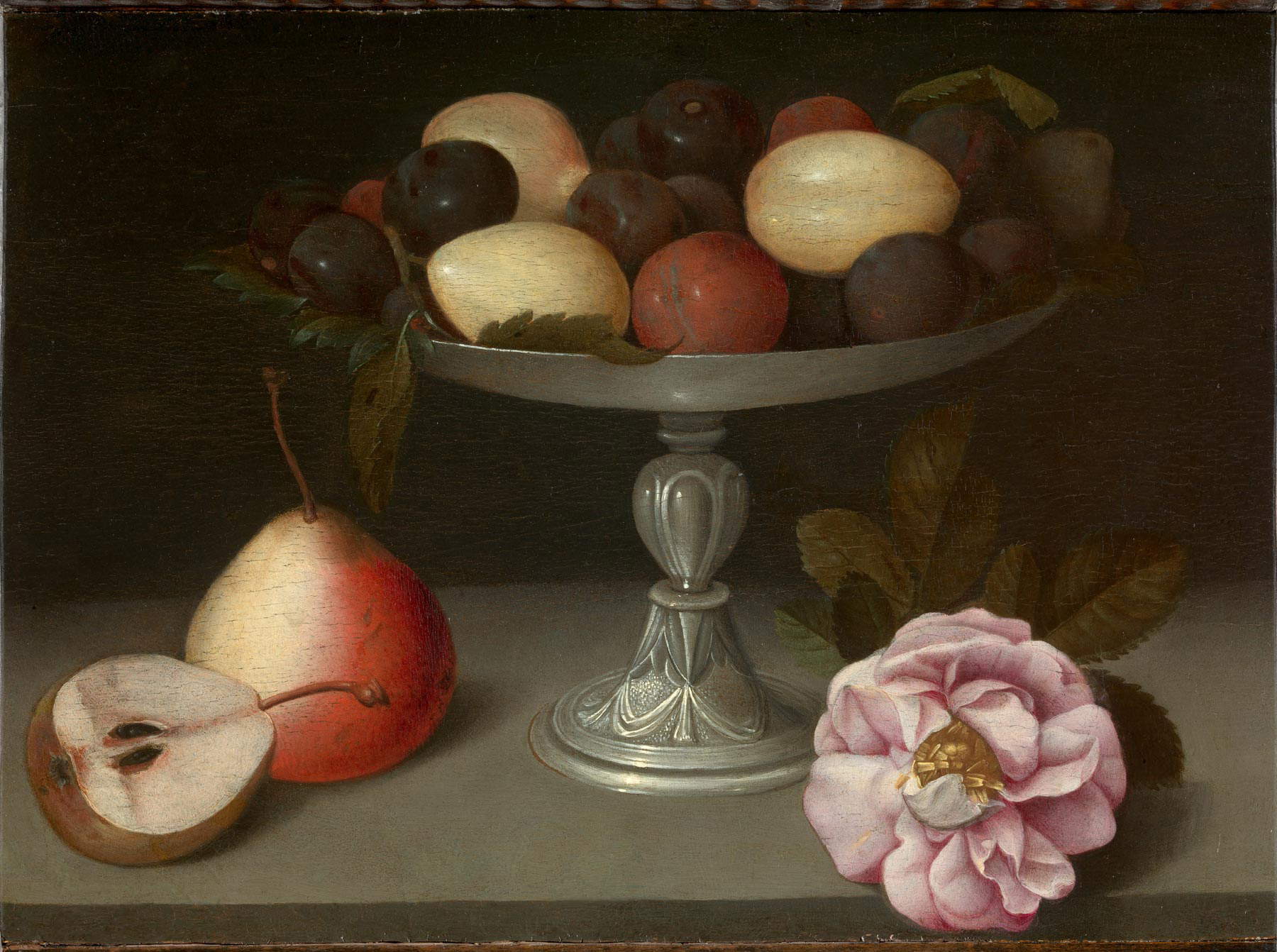 |
| Fede Galizia, Alzata with plums, pears and a rose (Bassano del Grappa, private collection) |
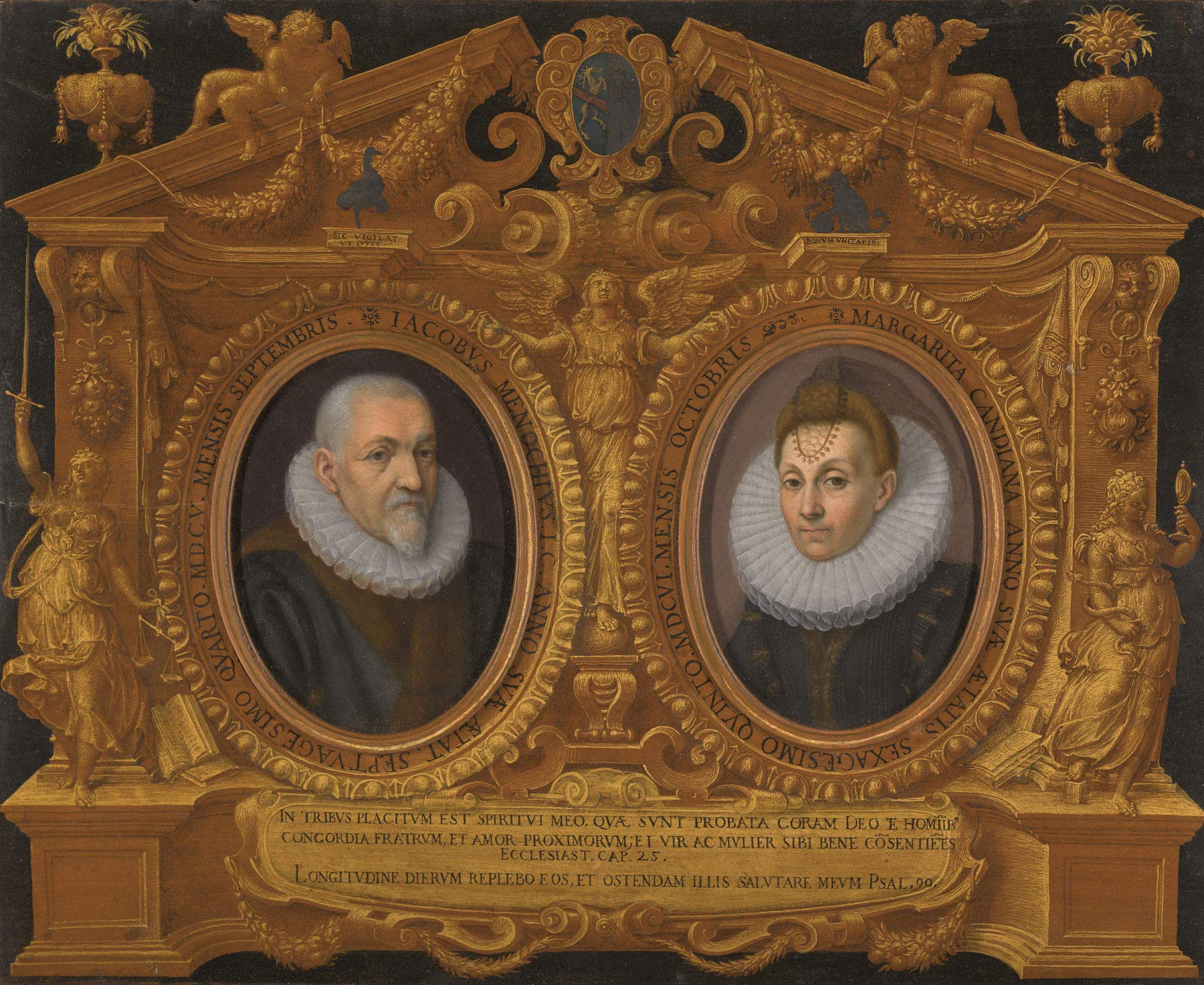 |
| Nunzio Galizia and Fede Galizia, Frame with portraits of Jacopo Menochio and Margherita Candiani (Private collection) |
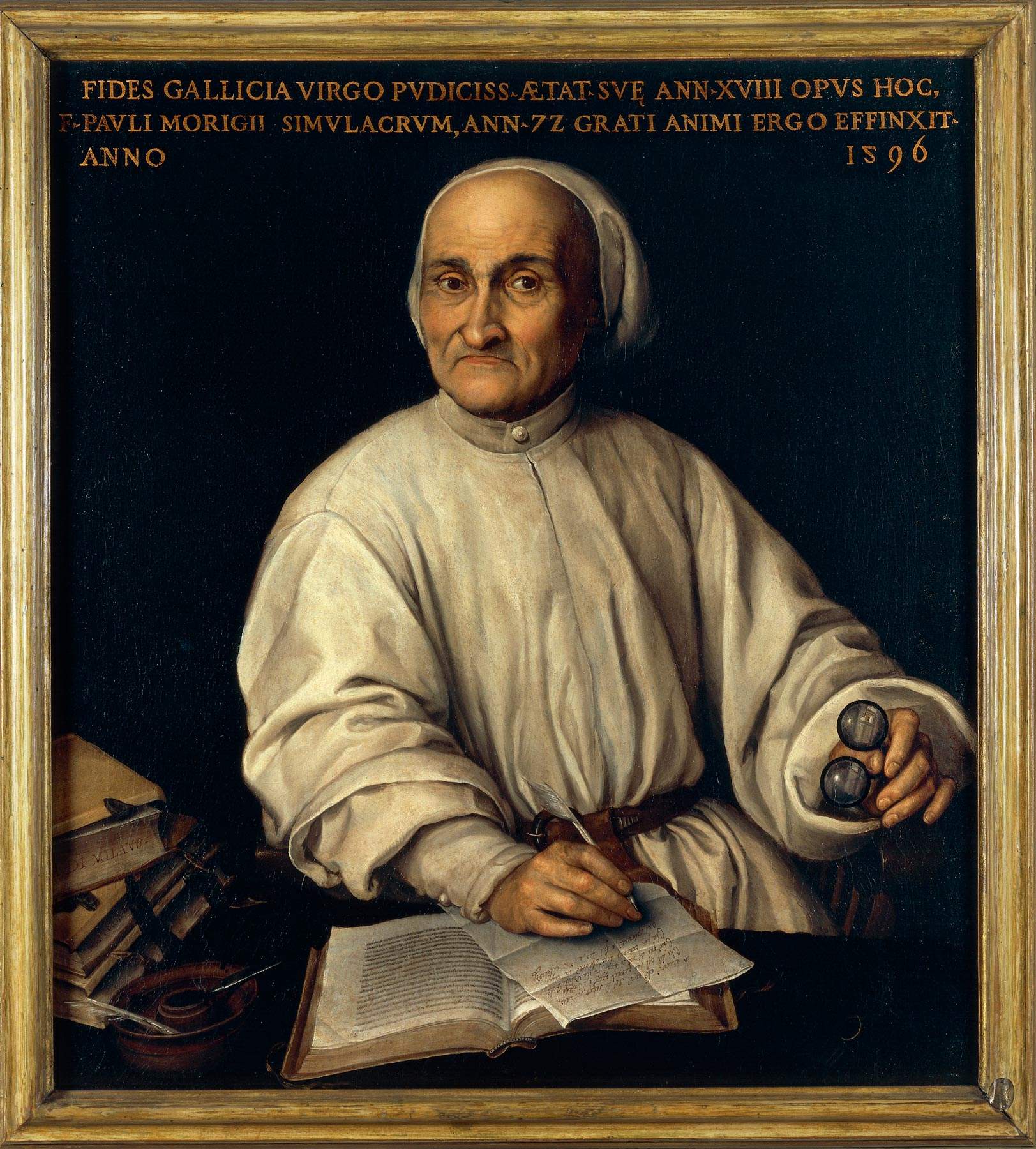 |
| Fede Galizia, Portrait of Paolo Morigia (Milan, Veneranda Pinacoteca Ambrosiana) |
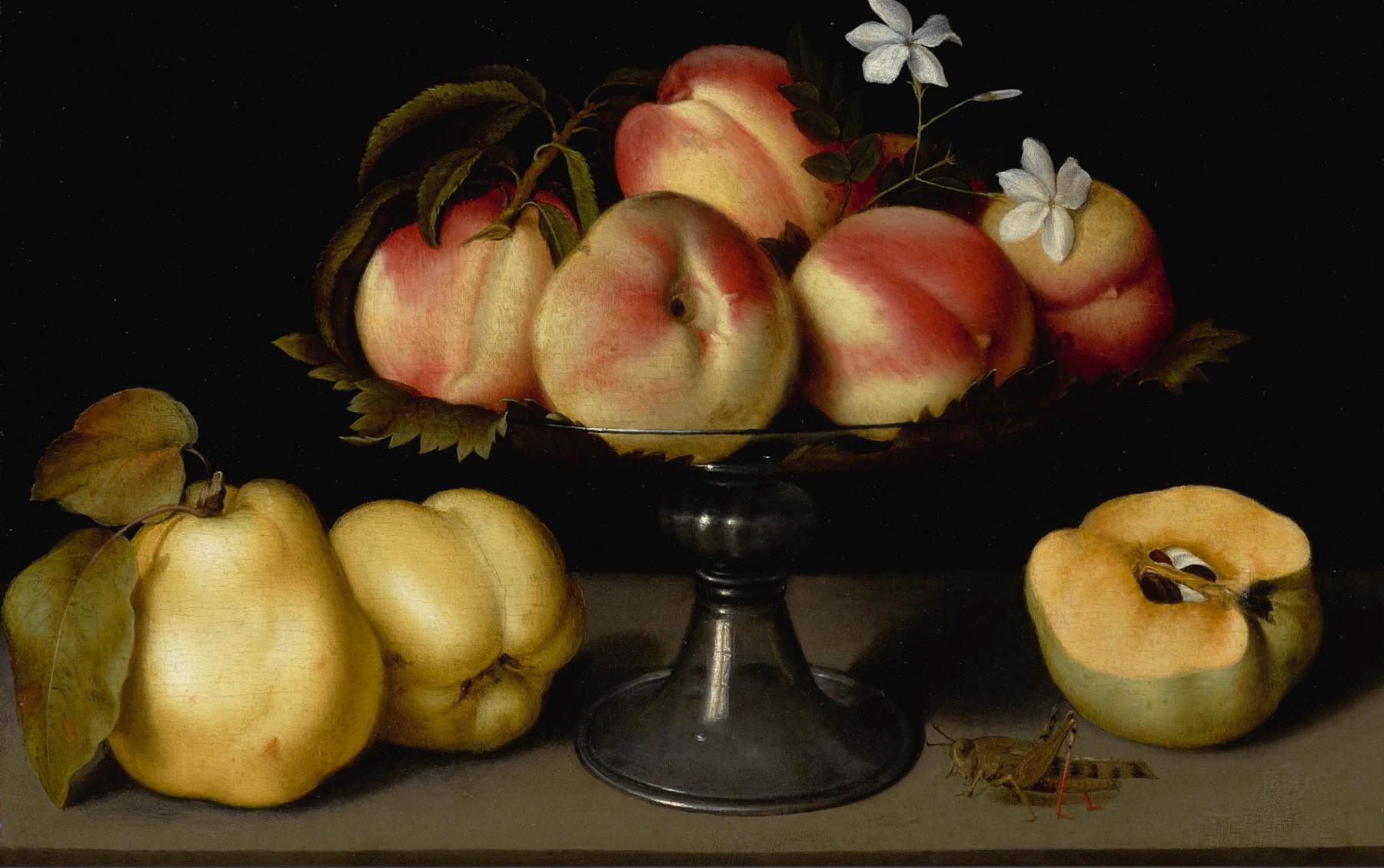 |
| Fede Galizia, Glass cup with peaches, quinces, jasmine flowers and a grasshopper (Private collection) |
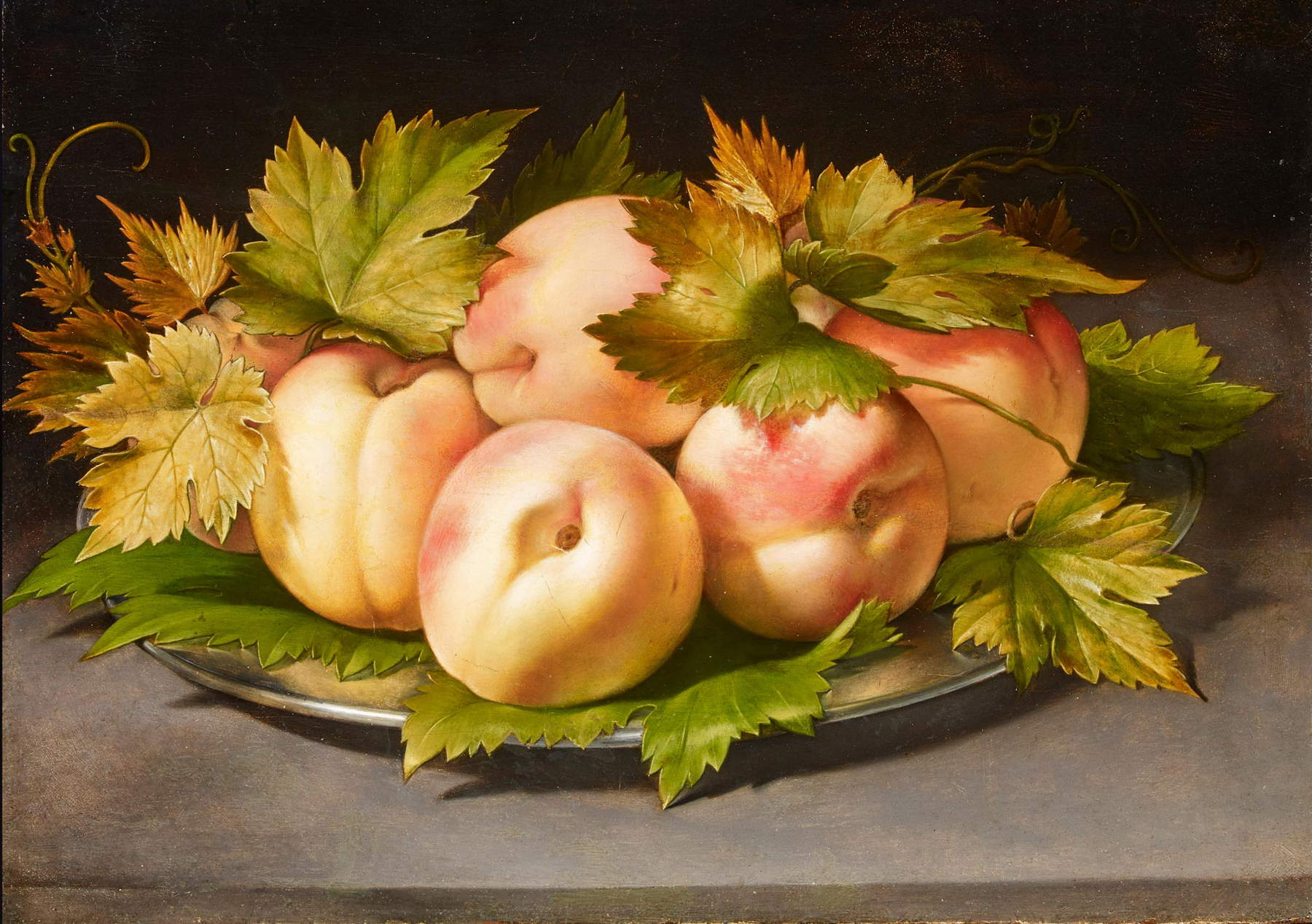 |
| Fede Galizia, Tray of peaches (Private collection) |
The exhibition was created to delve into the history of Fede Galizia, a woman artist, which consequently allows for the development of a topic that is very hot right now and on which interest continues to pour from many quarters. This is an artist to whom two monographs have already been dedicated but never a monographic exhibition: the idea was therefore to create an exhibition that would try, says curator Giovanni Stoppa, “to tell the story of this character not by proposing an abstract revaluation in qualitative terms, but by trying to understand her phenomenon within the Europe of her time, because this is the trait that really impresses: an artist who presents himself with a shrewd operation of pirouetted promotion to the highest ranks of European culture at the time, so much so that some of his works manage to arrive before 1595 in the collections of Rudolph II of Habsburg. Fede Galizia therefore is an artist whose success for us today is difficult to decipher, because the response he had in the twentieth century is mainly related to the theme of still life, so Fede Galizia becomes a kind of coat rack on which so many early still lifes are strung. Instead, we tried to make an operation, from this point of view, very radical, that is, limiting ourselves only to what could be safe pieces: therefore, it’s an exhibition that is anything but expansionist from an artist’s catalog point of view, it’s an exhibition that tries to place the figure of this character and his father, who is basically the deuteragonist of the exhibition, in a context that is plausible and that evaluates not only the works of art in terms of pure painting (because if we were to evaluate them in terms of painting, probably the spoils we would take home would not be exceptional), but in cultural terms, because in this respect it is an extremely singular phenomenon.”
Faith Galicia. Mirabile pittoressa was conceived by a working group headed, on the one hand, by the Castello del Buonconsiglio, and on the other by a group of students of Giovanni Agosti and Jacopo Stoppa, and was therefore also designed as a moment of education, a characteristic shared by the exhibitions of the two Lombard curators: “a way of growing,” they state, “a school of method, a way of understanding research, aimed not at an abstract or all too concrete valorization of the work of art in mercantile terms as sometimes happens, but rather at understanding phenomena of cultural phenomena.”
 |
| The first exhibition on Faith Galicia, a great painter of the 16th-17th centuries, is coming to Trent. |
Warning: the translation into English of the original Italian article was created using automatic tools. We undertake to review all articles, but we do not guarantee the total absence of inaccuracies in the translation due to the program. You can find the original by clicking on the ITA button. If you find any mistake,please contact us.